Pausha Putrada Ekadashi 2025: 30 या 31 कब है पौष पुत्रदा एकादशी व्रत? जाने सही तिथि व मुहूर्त
पौष पुत्रदा एकादशी 2025: क्या आप जानते हैं कि साल 2025 अब धीरे-धीरे हमसे विदा ले रहा है? लेकिन जाते-जाते…
 0%
0%

In Hindu culture, several festivals and celebrations include the worship of animals. We count our cattle as our family, not as domestic animals.
Farmers celebrate the Bail Pola festival 2025 as one of the most important festivals dedicated to cows and bullocks.
They observe this festival on the new moon day of Bhado Maas (a month in the Hindu calendar). During the celebration, farmers untie the ropes of bulls and cows and worship them with great devotion.
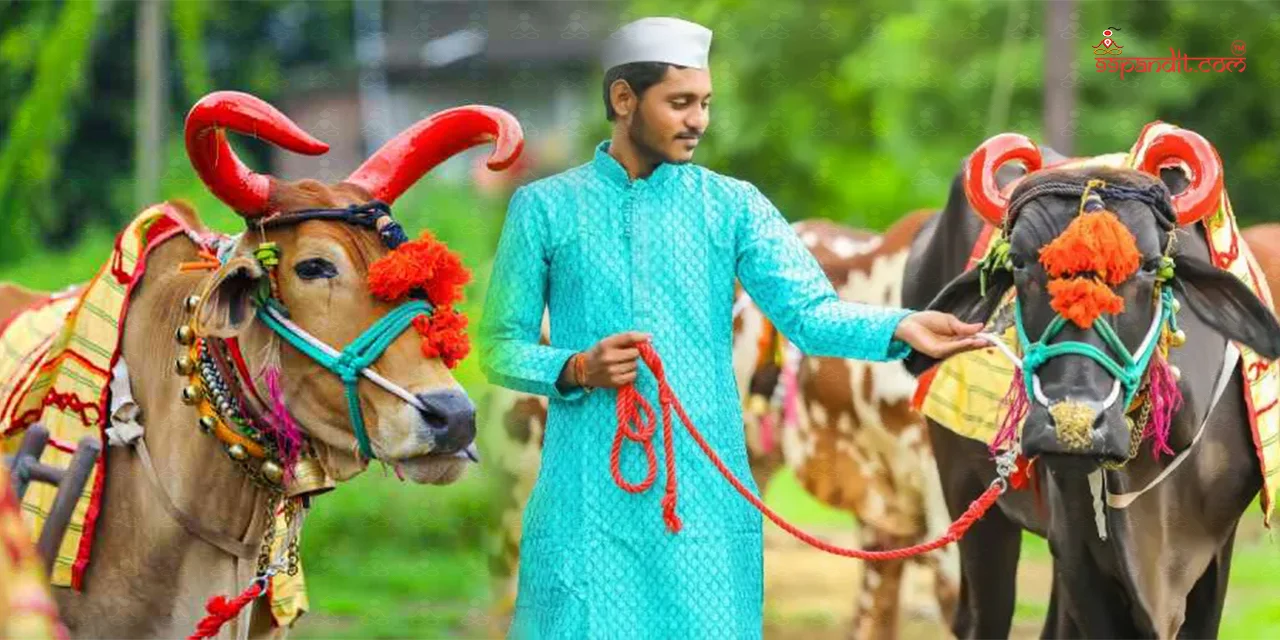
On this day, farmers do not go to their fields to celebrate the Pola festival; they stay at home with their families.
People also refer to the Bail Pola festival as Pithori Amavasya, Kushagrahani, and Kushotpatini.
Today, we are going to get you every single detail about the amazing festival with 99Pandit.
In this blog, you will find complete details about the festival, including the date, rituals performed, significance, and wishes for the Bail Pola festival 2025. So without further ado, let’s dive in!
According to the Hindu calendar, people celebrate Bail Pola 2025 on the new moon day of the Bhadrapad month.
It usually falls in August or September. In 2025, people across various states will celebrate Bail Pola on Saturday, August 23, 2025.
Bail Pola is an important festival of Maharashtra, in which farmers express their gratitude to the bulls who work hard in the fields throughout the year.
Devotees observe this festival on Darsh Pithori Amavasya. On this day, they specially decorate the bulls. They paint the bulls’ horns and tie balloons to them.
They also adorn the bulls by making them wear bangles on their feet and bells around their necks, which enhances their appearance.
Farmers bathe the bulls and take them around the village in a grand procession.
People in Maharashtra, Karnataka, Chhattisgarh, and Madhya Pradesh primarily celebrate this festival on Bhadrapada Krishna Amavasya.
In Karnataka, devotees celebrate Pola on the new moon day of Bhadrapada, which is also referred to as Pithori Amavasya, Kushagrahani, or Kushotpatini.
People call the Pola festival by several names, including Bail Pola, Motha Pola, and Tanha Pola. They celebrate it over two days, during which they worship the bulls.
Additionally, children play a unique role in the celebration. Families craft horses made of clay or wood for the children, who then go from house to house collecting money or gifts.
This festival actually means the end of farming activities like weeding, planting, etc., but sometimes this does not happen due to irregular rainfall. And bulls are an important part of the farmers’ lives.
Therefore, farmers worship bulls on this day, considering them as gods. The festival is of various importance to men, women, and children.
On the day of Bhado Amavasya, one day before the Pola festival, farmers untie the ropes of bulls and cows and massage their entire bodies with turmeric, ubtan, and mustard oil. On the day of the Pola festival, they bathe the animals properly.
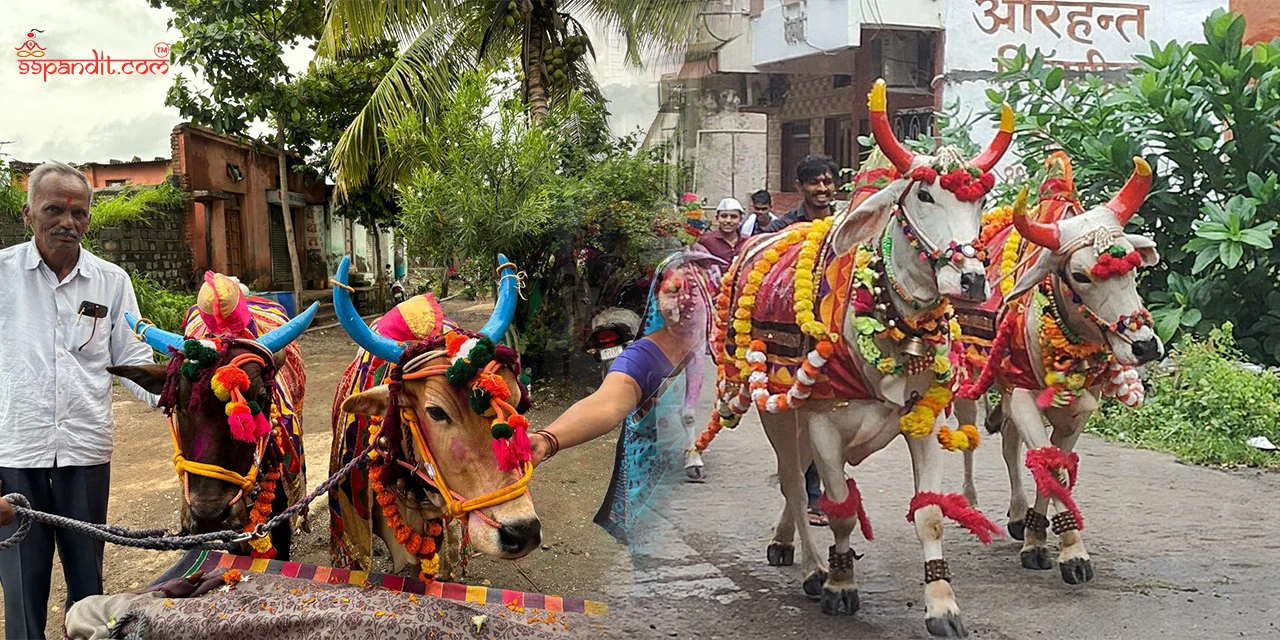
After bathing them, farmers decorate the bulls and cows and put a garland of beautiful bells around their necks. They also adorn them with clothes and metal rings.
After decorating the bulls, men worship them. Communities also organise a ‘Bull Decoration Competition’ on this day.
Women go to their maternal homes on this festival. Small children worship clay bulls. People across cities and villages celebrate the Pola festival with great fervour.
During this time, devotees everywhere worship the bulls. Vendors start selling pairs of clay bulls in the markets two to three days before the festival. Along with these, they also display a wide variety of other clay toys in the markets.
The Bail Pola festival reflects the deep connection between agricultural traditions and culture. Farmers observe this festival on the new moon day of the Bhadrapada month to worship and express gratitude toward their bulls.
There is a tradition for children to play with wooden bulls (Nandi bulls). Farmers worship their bulls and feed them special food.
Traditional dishes are also made on this day, in which puran poli and sweets are prominent.
Pola is primarily a festival of farmers, celebrated to honour the important role of bulls in agriculture.
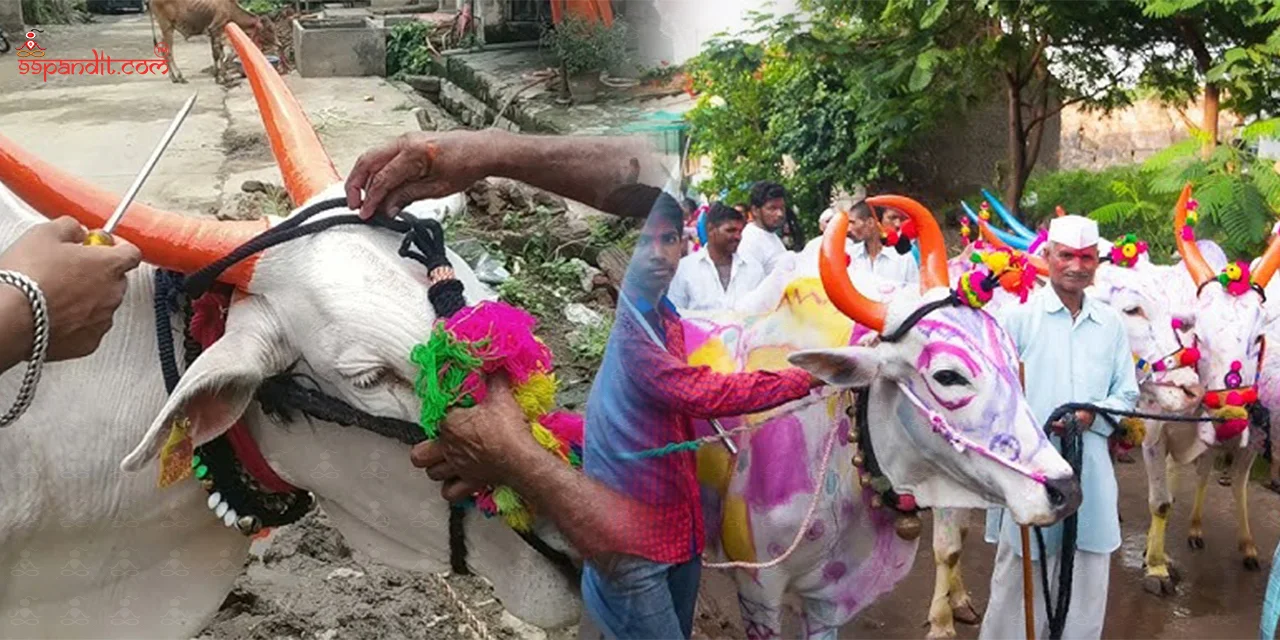
On this day, farmers bathe their bulls, decorate them, and apply oil on their horns and decorate them with beautiful colours.
The bulls are decorated with garlands of flowers and colourful clothes. Pola is not only a religious festival but also reflects social harmony and family unity.
This festival honours the hard work of farmers and the labour of oxen. People organise special fairs and markets on this day in the Balaghat district, where rural handicrafts and local cuisine take centre stage.
The rituals of the Pola festival begin in the morning and continue throughout the day. Some of the significant rituals are as follows:
1. Bull Bathing and Grooming: Farmers bathe their bulls, oil their horns, and use decorative colours.
2. Puja Archana: The bulls are worshipped with turmeric, kumkum, and flowers, and Aarti is performed.
3. Tying of sacred thread: A sacred thread or toran is tied on the horns of the bulls to bless them.
4. Village Procession: Decorated bulls are taken out in a procession through the village, and people sing hymns.
5. Rest for bulls and farmers: The bulls are given rest throughout the day, and the farmer also takes a break from agricultural work.
6. Exchange of sweets: Families make traditional sweets and share them with neighbours and relatives.
Ancient agricultural societies linked the origin of the Pola festival to their deep respect for bulls, considering them the backbone of farming.
Historical texts and folklore mention that farmers used to celebrate Bull Pola for prosperity and a good harvest season.
Hindu scriptures describe the bull as a symbol of Dharma (justice) and power. Thus, this festival is important not only from an agricultural point of view but also spiritually and culturally.
According to mythology, when Lord Vishnu took the form of Lord Krishna, he was born on the day of Janmashtami. When Kansa came to know about this, he sent many demons to kill Lord Krishna.
Kamsa made many attempts to kill Lord Krishna in the Dwapar Yuga, but he was not successful in this task.
Then, Kansa sent a demon named Polasur to kill Krishna. Polasur took the form of a bull and joined the animals. Lord Krishna recognised the demon even in the herd of animals and killed him.
For this reason, people began calling this day Pola, and since then, the Hindu community has celebrated the Bail Pola festival as part of their cultural tradition.
Chhattisgarh is a beautiful sight to behold. Several individuals in society celebrate the Pola festival with a lot of interest. The Pola festival of a pair of bulls is a sight to behold.
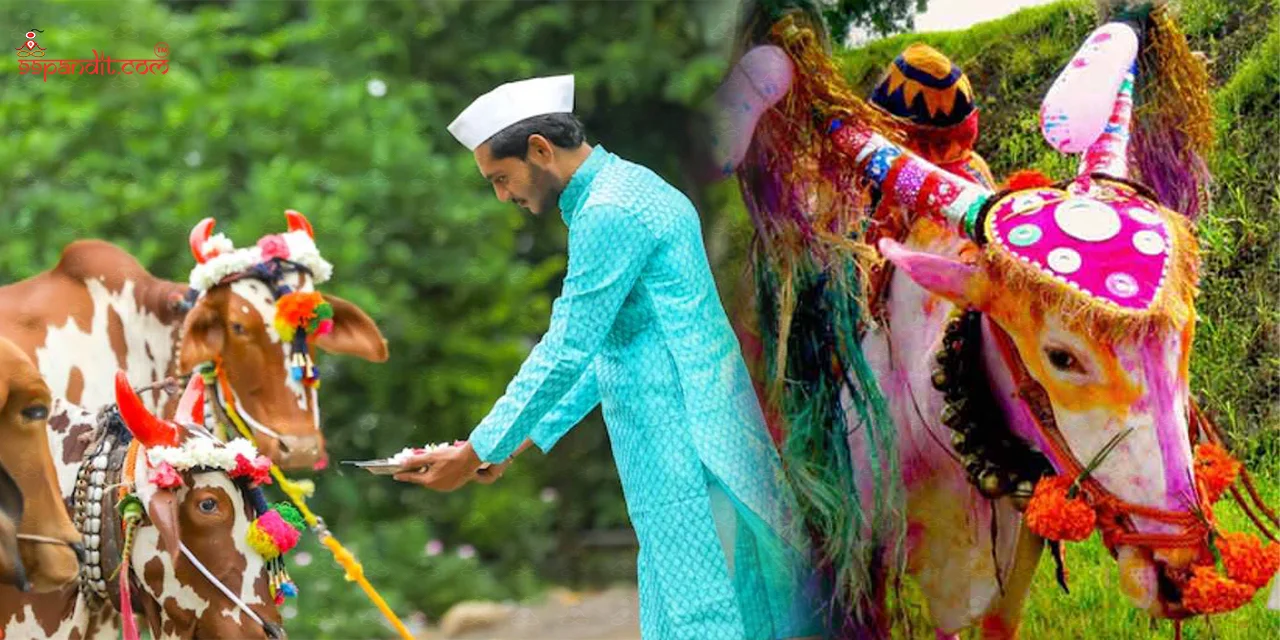
In Chhattisgarh, families prepare many delicious dishes like Thethri, Khurmi, Chausela, and Kheer-Puri during this vibrant folk festival.
During this festival, households across the region cook a variety of traditional dishes, including:
The festival of Bail Pola is celebrated with great pomp in Maharashtra, especially in rural areas. Here are some major highlights of the celebration in different regions:
Apart from Maharashtra, Bail Pola is also celebrated in Madhya Pradesh, Chhattisgarh, Karnataka, and Telangana in various regional forms.
In summary, Bail Pola is not just a celebration but a tribute to the invaluable contribution of bulls in agriculture. The festival promotes gratitude, community unity, and cultural pride.
Farmers across rural India will celebrate Bail Pola on August 23 with joy, devotion, and traditional gaiety.
They observe this festival on the new moon day of the Bhadrapada month, devoting it especially to worshipping the bulls and expressing their gratitude toward them.
This festival inspires us to understand sustainable farming, animal welfare, and the depth of Indian agricultural traditions.
I hope you liked reading this article and got deep insights about this incredible festival.
99Pandit always tries to inform users about some unheard festivals through these blogs. Along with this, 99Pandit is the best platform for all your puja-related queries.
Whether you are performing Satyanarayan Puja or Marriage Puja, there is always a need for a Pandit.
You can easily get a Pandit from 99Pandit without a hassle. So, whenever there is a Puja, you know where to book a reliable Pandit.
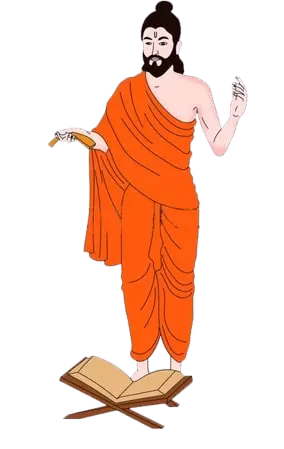
100% FREE CALL TO DECIDE DATE(MUHURAT)

Table Of Content
Filters by categories
All Pujas
Puja On Special Events
Upcoming Pujas
Dosha Nivaran Pujas
Mukti Karmas
Filters by Trending Topics
Filters by Regions
North Indian Pujas
South Indian Pujas